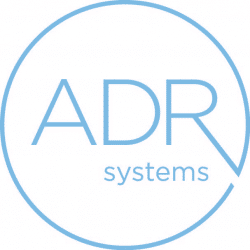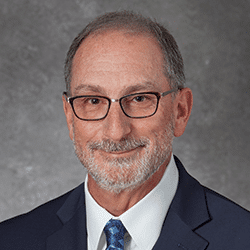Tense mediations involving unwieldy parties can pose a challenge to settlement, but not one that is insurmountable. Mediators at ADR Systems have had numerous challenging cases with parties that are diametrically opposed to one another, quick to anger or seemingly convinced that resolution is improbable – and yet they can almost always help the parties settle.
How do they do it? Our mediators share insight on resolving challenging cases even under the most extreme circumstances.
Use Breakouts and Break-ins
Typically, parties are placed into separate breakout rooms – be they actual or virtual – at the start of a mediation, but sometimes, with highly litigious parties, they need to be brought together to talk face to face, according to Hon. Michael R. Panter, (Ret.), senior mediator and arbitrator at ADR Systems.
“Sometimes the defense doesn’t comprehend the magnitude and severity of the plaintiff’s injuries, or the plaintiff’s attorney isn’t swayed by the line the defense attorney is persistently drawing,” Judge Panter explained. “Meeting face to face, listening to what they each have to say, can be powerfully persuasive. It’s a judgment call on the mediator’s part, though, believing the parties will truly gain something from this “break-in” exercise.”
During these break-ins when the parties are brought together, Judge Panter has also written out – on whiteboards or on a word document while sharing his screen during a remote session –the facts of a case that everyone agrees on to demonstrate how close they are to a settlement.
“That visual can be really powerful; it can stimulate momentum because it helps the parties finally see a finish line,” Judge Panter said.
Build Trust and Empathy
To progress toward settlement in cases involving catastrophic injuries or entrenched feelings of pain, trust and empathy are key, according to Hon. Kay M. Hanlon, (Ret.), senior mediator and arbitrator at ADR Systems.
Judge Hanlon recalled mediating a case involving a plaintiff who suffered a brain injury that predisposed him to fits of anger. During the mediation, he became furious and threatened to leave. Ultimately, he did. A mediator can be tempted to view such a situation as a complete derailment of the proceedings when, in fact, it is not. Instead, Judge Hanlon relied on the plaintiff’s mother to help her move the proceedings along.
“It was an opportunity to better understand the experience of the plaintiff – to place myself in his shoes – as I worked to help him and the defendant settle,” said Judge Hanlon.
It took time, though, Judge Hanlon emphasized; more time than is allotted for even a full-day mediation. “We had only met one another for the first time that day. The mother and I – and the plaintiff and I – had to establish trust between one another. They needed to trust me when I insisted that continuing, despite the challenges, was the best course for everyone, no matter how long it took,” said Judge Hanlon. “We finally settled, but without taking time to build our relationship, the mediation would have not succeeded.”
Find the Roots of the Dispute
Both sides can come to the mediation with predetermined expectations and preconceived perceptions about the process, so it is important that each side focus on the main reasons why they value the case as they do.
This is why Hon. F. Keith Brown, (Ret.), senior mediator and arbitrator at ADR Systems, considers himself “a man of broken dreams and changed expectations.” According to Judge Brown, “In cases with difficult clients, the key is for a mediator to listen first, then allow for an objective conversation and provide an empathic ear when necessary.”
Judge Brown has settled several cases in which there were more than 20 plaintiffs and has often used computer spreadsheets and formulas to demonstrate how parties with conflicting interests might come together. Such strategies help the parties let go of their emotional attachment to certain issues and focus on the facts, he explained.
“Sometimes I am involved in cases in which there may be multiple parties with varied expectations,” said Judge Brown. “Creating a problem-solving team approach can be an effective tool in reaching an agreement. Understanding everyone’s expectations and having a conversation about them is essential.”
From there, Judge Brown calls upon his experiences as a former judge and as a mediator to facilitate negotiations, explore each parties’ pain points and work toward a feasible settlement.
“It’s simple and complex all at once, finding the roots – often deep roots – of these cases,” said Judge Brown. “But in my experience, it’s a tried-and-true way to advance everyone closer to settlement.”
Learn more about how ADR Systems’ neutrals can help you settle your case.
Hon. Michael R. Panter, (Ret.) is a senior mediator and arbitrator at ADR Systems. He is known for his thorough and intelligent approach to settlements and the boundless energy he brings to the dispute resolution process. Judge Panter has more than 30 years of legal experience and brings a unique and empathic approach to counsel and their clients. He has mediated a wide variety of commercial and personal injury cases.
Request Judge Panter’s Availability
Hon. Kay M. Hanlon, (Ret.) has expertise in resolving personal injury actions such as medical malpractice, mass torts and product liability. Counsel who appeared before Judge Hanlon find her to be perpetually prepared, ready to listen attentively.
Request Judge Hanlon’s Availability
Hon. F. Keith Brown, (Ret.) has extensive experience in settling personal injury, workers’ compensation and commercial matters. As a mediator, he is known for his keen ability to easily connect with people and promote productive communications between all parties. Judge Brown is a beloved pillar of the community, who has been recognized numerous times for community service.
Request Judge Brown’s availability
ADR Systems, It’s Settled. ®





